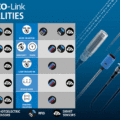~ The answer to manufacturing’s waste problem is hidden in data ~
In reshaping the world towards a new normal post pandemic, industry must leverage digital transformation at an accelerated pace. This is already happening — according to IBM, 67% of manufacturers have accelerated digital projects since COVID-19. While improved operational efficiency is typically the reason for these changes, industry should capitalise on the convergence of Industry 4.0 and environmental, social and governance (ESG) goals to improve their sustainability credentials. Here, V R Vijay Anand, Head of Digital Machining at global leader in metal cutting Sandvik Coromant, explains why data holds the key to reducing manufacturing’s waste problem.
Despite uptake of digital tools, only 59% of manufacturers cite improved sustainability as a reason to digitalise their operations. However, digitalisation’s potential extends far beyond its perceived applications. Data collated by the Association of Swedish Engineering Industries (Teknikföretagen) emphasises the importance of digital tools to reaching sustainability goals — leveraging IT technology in other sectors, like manufacturing, has the potential to reduce total CO2 emissions by as much as 20 per cent.
Increasing digital tool use is vital to aligning manufacturing activity with the Paris Agreement, increasing resource efficiency and, crucially, reducing waste. Globally, industrial waste generation is almost 18 times greater than municipal solid waste, according to the most recent data from World Bank. Every manufacturing facility generates waste, a lot of which could be avoided.
Overproduction and defect output are two of the most common contributors to waste generation. Facilities running on legacy technologies that lack the sophistication to deal with the challenges of modern-day manufacturing are far too common. However, this doesn’t mean that manufacturers should accept vast waste generation as an unavoidable consequence of production. Industrial waste must be reduced, and data can play a key role in achieving this, if manufacturers know what to do with it.
Improving operational efficiency
Every manufacturing facility, no matter its size, complexity or age, generates a significant amount of data every day. In a smart factory, this data includes everything from equipment performance to product quality and is collected via sensors installed on each machine. Starting small, with each individual machine’s data, is the first method of reducing waste on a large scale.
Small changes to individual processes accumulate and together have a huge impact on operational efficiency. Collecting data from machinery on the shop floor and analysing it allows manufacturers to monitor and act on machine data. Manufacturers can then use this data to optimise individual machine processes that significantly contribute to overall energy use by detecting inefficient processes, streamlining production and logistics planning and predicting upcoming maintenance needs. By making several smaller processes more energy efficient, data can be used to control — and reduce — overall energy consumption.
Energy inefficiencies can be identified in real time, giving manufacturers the opportunity to identify potential reasons and solutions. For example, when looking at energy consumption data, manufacturers may discover one piece of equipment that uses significantly more energy than others. Using this information, manufacturers can then identify the cause of increased power consumption and implement improvements to streamline machine efficiency and reduce energy waste.
Analysing data in real time, continuously, can also help streamline machine maintenance. Data analytics can identify upcoming problems before they happen. If a machine experiences a problem, or change in performance, it may start to produce parts that are not fit for purpose that would ultimately end up as waste. Data on machine performance can help to identify minute changes in machine behaviour as soon as they occur, so that engineers can conduct predictive maintenance before multiple defect products are produced.
The CoroPlus® suite of products in the Data Driven Machining offer area, from Sandvik Coromant, help manufacturing organizations improve efficiency, reduce waste and increase productivity. The CoroPlus® Process Control, which monitors machines in real time and triggers actions in accordance with programmed protocols. If specific, predetermined issues occur, the solution automatically triggers a correctional action — like stopping the machine or replacing a worn cutting tool. Conducting maintenance in this way improves operational efficiency by as much as 89% and reduces waste by allowing manufacturers to assess data, monitor machine performance, and identify faults before they occur.
Considering the whole life cycle
Data produced by conducting life cycle assessments (LCA) can also help waste reduction. An LCA assesses the environmental impact of a product at every stage of its life span by considering how a product’s raw materials are extracted, the quantity of resources required, the materials and energy used during manufacturing, packaging and distribution, the impacts of the product’s functional use, and the waste and pollution created at the end of the product’s life.
By considering every single step of the product’s lifecycle, an LCA leaves no stone unturned. Once an LCA has been completed, manufacturers can identify big sustainability flaws in a product, evaluate the sustainability of products still in development, and design new, more sustainable solutions.
However, it is not just the products themselves that must be considered, but their packaging too. Packaging is necessary but raises many environmental concerns due its demand for resources. The problem is shared globally, too. In the UK, nearly 44 million tonnes of packaging waste are produced annually by commerce and industry, while 28% of total municipal solid waste in the US is attributed to packaging.
Sandvik Coromant recognises the problem with packaging, even for products like cutting tools, and recently launched its package selector application (PSA). The PSA uses data to analyse a 3D CAD model of the Sandvik Coromant product to be packaged, identifies its critical points, and uses an AI algorithm to recommend the smallest amount of packaging possible. This improves the LCA of Sandvik Coromant’s tools by reducing packaging waste produced for their distribution to manufacturers.
Circularity through transparency
Data can also be used to facilitate a closed loop manufacturing chain, where waste from one process is used as a resource in another. Operating in this way promotes a circular economy of manufacturing, where waste is minimised as much as possible through continuous reuse.
Using data from an LCA, along with machine data, manufacturers can improve the efficiency and circularity of their products through constant product and process improvements. Efficiently implementing a production system of this kind requires a robust data strategy. To create a strong data architecture, manufacturers need a digital infrastructure that can easily synchronise operations, potentially across several locations, and identify opportunities to utilise waste that would otherwise be in silo. Sandvik Coromant’s CoroPlus® suite of machine connectivity and sensor embedded tool solutions makes digital machining accessible to manufacturers, equipping them with the “close to cutting edge” data needed to make use of their waste resources for more sustainable operations.
Data can seem overwhelming at first — with such vast quantities available, it can be hard to determine what to do with it. However, with the correct strategy, it can prove an extremely valuable tool for reducing industrial waste by improving efficiency, enabling predictive maintenance, inspiring innovative product development and streamlining resource management across machines, facilities, and even entire companies.








